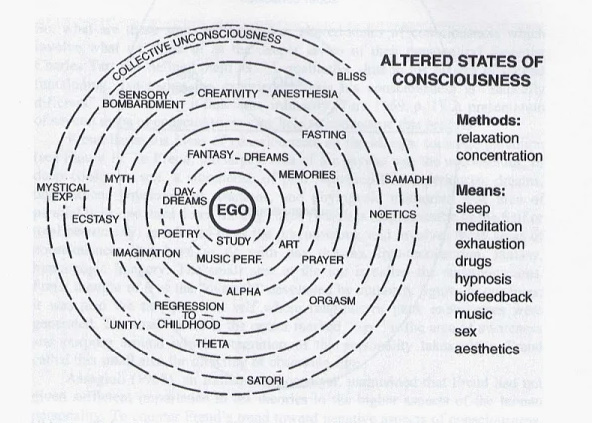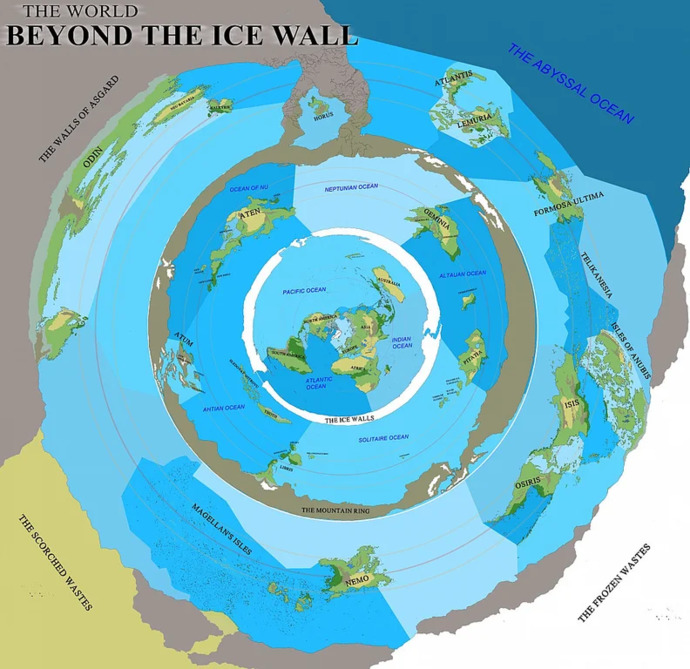Integral theory was conceptualized and made famous by Ken Wilber; a philosopher. He became known within the psychology-philosophy intellectual community by this theory. It is meant to be a huge umbrella theory that encompasses many different facets of human development and perception and epistemology. It unifies western philosophical-psychological thought and oriental philosophy.
AQAL
So we begin with all quadrants, all levels. The quadrants are the four quadrants that are seen to be the four domains in which human perception can be divided in.
To put it into more descriptive terms, we can say that the upper left quadrant is what Freud, Jung and the psychoanalysts in general concerned themselves with, which is also Ken Wilber's focus. The upper left quadrant is all about psychology and the subjective perception of reality.

The upper right quadrant is the natural-scientific hard-science domain. Objectivity that's outer, and individual. It's orientated toward the perception of the physical, objective reality (materialistic)
The lower left quadrant is what Kant focused on: the subjective, interior collective. This can be seen as morality, the way people treat each other, and intersubjective. Morality, relationships, etc.
The lower right quadrant can be considered as the sociological-political-economic realm. It's the realm where structural inequality/equality can be considered. It's the domain where society is analyzed. Marx, Weber, Durkheim... Philosophically, one could consider it the materialistic domain when it comes to society’s development and evolution.
So what Ken Wilber points out by making this catagorization of human perception is that when intellectuals debate, and misunderstandings occur in general, often it's due to the fact that each party in the discussion is not aware that they are discussing with a limited perception. For example, a typical discussion is between the Upper Right and the Lower Left: the lower left could be Jordan Peterson, and the typical upper right would be Sam Harris. They will agree on many things but still, the disagreement will be rooted in the inability they both have to see that they are limited to their respective quadrant.
Ok. The levels, or stages: The important thing to mention about the Stages of Development, is that they are to be interpreted as a hierarchy where each stage is more inclusive, not necessarily “better”, or not in the sense we usually see “better” as: it’s holistic and therefore a holarchy, not a hierarchy. A good analogy is when we learn how to read: we learn letters, then words, then sentences. You therefore not learn letters and jump to sentences. This means, then, that even if someone is at a green stage of consciousness, there are still facets, nuances of the prior, passed stages. This manifests through what can be understood as Jung’s concept of the Shadow.
Ego-centric Stages:
In this group of stages, the self-identity is limited to the self as a purely sensing, materialistic being that lives and thrives on the pleasure principle, as Freud would call it. In other words, the ego-centric stages are purely survival-driven. But we can go further than that: the main concern at this level is to survive but in regards to purely the first or first two levels in Maslow’s pyramid of needs.
Infrared Stage of Consciousness:
- Staying alive: food, water, warmth, sex, and safety.
Red Stage of Consciousness:
- Power and action. Be what you are and do what you want, regardless.
Ethnocentric Stage:
In this group of stages, the self-identity is defined and determined by the collective. It’s a move up in the holarchy in the sense that now, the individual has a consciousness that is developed enough to include a collective into the picture of his/her survival. It’s more inclusive, since it includes more beings and more Being than the prior group of stages.
Amber Stage of consciousness:
- Stability and purposeful life
- Laws, regulations. Social expected behavior, approval
- Not me, but us. (us vs them)
World-centric stages:
In the group of stages that is called “World centric”, we come to a point where the individual and/or society become conscious enough to include the globe as a part of the self-identity. The biggest leap that society has been trying to jump in the last 60 years, so since approximately the initiations of the human rights, pacifist, feminist-egalitarian, hippie, multicultural movement in the late 60’s, (at least in western civilization) is to transform society into a green stage society as an average, where the average, somewhat educated human being is at a green stage of consciousness. This does not mean that it has not had its defects, and that it hasn’t had its contradictions. We will talk about those in part
Some psychologists and philosophers wouldn’t consider society in the west to be even close to having stage green as an average for a human adult. Many would say that the average is still at amber and orange.
Orange stage of consciousness:
- Success and autonomy
- Act in your own self interest by playing the game to win
Delivery of results, effectiveness, goals.
Green Stage of Consciousness:
- Community harmony and equality
- Sensitivity to environment and others.
- Multiculturalism, feminism, pacifism, plurality
- Self in relation to system and interaction with system
Kosmocentric Stages:
The kosmocentric stages are also called “integral” stages, where the very core jump from green to teal is to be able to encompass and integrate two different opinions within oneself, no matter how contradictory they may seem. For example, in my case this challenge has been manifesting itself in the way that I have to integrate my more hippie-liberal-laid-back personality facet and my more squared-rational facet. You could say it’s the epitome of what Jordan Peterson describes as balancing order and chaos in his book 12 Rules for Life. Another aspect of the jump from green to teal is the realization of the social construction of reality. Seeing that everything is actually just a game we play. It’s all an illusion. A collective illusion that we have agreed so strongly on that it’s the most convincing thing you’ll ever experience.
Teal Stage of Consciousness:
- Qualities and responsibilities of being. Basic theme is living fully and responsibly as what you are, and learn to become.
- Linking theory and principles and practice. Dynamic systems interactions
- Comprehends multiple interconnected systems
- Seeing the social constructions of reality
Turquoise Stage of Consciousness:
- Global order and renewal. Experience of the wholeness of existence through mind and spirit
- Holistic, intuitive thinking, cooperative actions
- Seeing self both as distinct and a blended part of a larger, compassionate whole.
- Interplay of awareness, thought, action, and effects; transforming self and others
Indigo Stage of Consciousness:
- Self identity is being, non-controlling consciousness; witnessing the flux of experience and states of mind.
Intelligences
Integral theory incompasses the multifaceted components of development. It categorizes the overall development of an individual and a society, but it does so by taking into consideration the moral, aesthetic, emotional, cognitive… dimensions of one’s intellect and intelligence. Wilber distinguishes these intelligences because he realizes that one intelligence does not imply that the other is equally as high. For example, a nazi doctor will probably have a pretty high cognitive development but a fairly low moral development.
States

States in this framework are understood as states of consciousness. A state of consciousness can be described as a bodily, mental, perceptual sensation of experience. It’s difficult to categorize and conceptualize the states of consciousness but there are two states of consciousness that can be distinguished in words, even if the words fall short of their actual realization and direct experience.
Normal human consciousness – what you’re experiencing right now – most likely
This is the state of consciousness that is most prevalent in the human experience. It’s the state of consciousness that is predominantly physical, three dimensional, and finite. It’s characterized and sensed through the conventional five senses. These sensations are gradual, which means that they can be heightened or dimmed depending on the micro-state of consciousness, if you wish to call it that (for example women during pregnancy). At each level of development, all states of consciousness will be able to be attained, but to different degrees.
Satori
Satori is what the far-eastern philosophies and religions call the state of consciousness that encompasses the sensation of self but also the identification with the environment, with the whole of reality. The division between self and other evaporates and everything becomes the Self or Tao, as the Japanese would call it, or Brahman, as Hinduism calls it.


Most Helpful Opinions